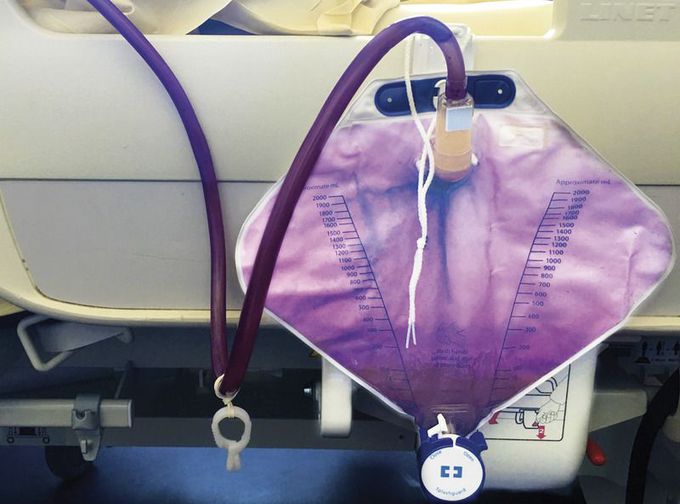


Purple Urine after Catheterization
A 70-year-old woman had a urinary catheter placed during a hospitalization for aphasia and hemiplegia after an acute stroke. Ten days after catheterization, her urine appeared purple. Urinalysis showed leukocytes but no nitrites, and the pH was 8. A urine culture grew Klebsiella pneumoniae. The purple discoloration is thought to occur as a result of a chemical reaction facilitated by certain bacteria in alkaline environments. Dietary tryptophan is converted to indole within the gut, absorbed into the circulation, and metabolized by the liver to form indoxyl sulfate. When excreted in the urine, indoxyl sulfate can be broken down by bacterial enzymes to form indigo and indirubin, which are blue and red, respectively, creating the color purple when combined. This reaction is known to occur in the presence of several other bacteria, including Pseudomonas aeruginosa, Providencia stuartii, Escherichia coli, and enterococcus species. Since the patient had no clinical signs consistent with infection, no antibiotics were administered, but she did receive intravenous hydration. The purple discoloration resolved over 4 days, and the urinary pH returned to a normal level, but the patient remained hemiplegic and aphasic and was admitted to a long-term care facility.

